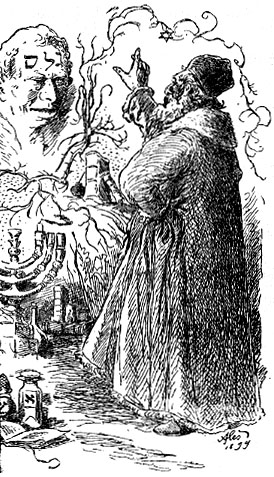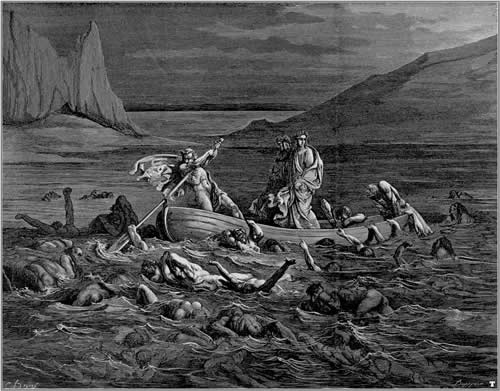lundi, juillet 07, 2014
lundi, juin 16, 2014
Sleeping Beaty since 1920
Rosalia Lombardo (December 13, 1918 in Palermo, Italy – December 6, 1920), was an Italian child who died of pneumonia. Rosalia's father, Official Mario Lombardo, was sorely grieved upon her death, so he approached Alfredo Salafia, a noted embalmer, to preserve her.Her body was one of the last corpses to be admitted to the Capuchin catacombs of Palermo in Sicily.
vendredi, février 28, 2014
Chupacabra
The chupacabra, from chupar "to suck" and cabra "goat", literally "goat sucker") is a legendary cryptid rumored to inhabit parts of the Americas, with the first sightings reported in Puerto Rico. The name comes from the animal's reported habit of attacking and drinking the blood of livestock, especially goats.
he most common description of the chupacabra is that of a reptile-like creature, appearing to have leathery or scaly greenish-gray skin and sharp spines or quills running down its back. This form is approximately 3 to 4 feet (1 to 1.2 m) high, and stands and hops in a fashion similar to that of a kangaroo. In at least one sighting, the creature was reported to hop 20 feet (6 m). This variety is said to have a dog or panther-like nose and face, a forked tongue, and large fangs. It is said to hiss and screech when alarmed, as well as to leave behind a sulfuric stench. When it screeches, some reports assert that its eyes glow an unusual red which gives the witnesses nausea.
he most common description of the chupacabra is that of a reptile-like creature, appearing to have leathery or scaly greenish-gray skin and sharp spines or quills running down its back. This form is approximately 3 to 4 feet (1 to 1.2 m) high, and stands and hops in a fashion similar to that of a kangaroo. In at least one sighting, the creature was reported to hop 20 feet (6 m). This variety is said to have a dog or panther-like nose and face, a forked tongue, and large fangs. It is said to hiss and screech when alarmed, as well as to leave behind a sulfuric stench. When it screeches, some reports assert that its eyes glow an unusual red which gives the witnesses nausea.
dimanche, février 13, 2011
dimanche, janvier 09, 2011
Hades
Hades refers both to the ancient Greek underworld, the abode of Hades, and to the god of the underworld.
According to myth, he and his brothers Zeus and Poseidon defeated the Titans and claimed rulership over the universe ruling the underworld, air, and sea, respectively; the solid earth, long the province of Gaia, was available to all three concurrently.
lundi, décembre 06, 2010
Golem
In Jewish folklore, a golem is an animated anthropomorphic being, created entirely from inanimate matter.
In some tales, a golem is inscribed with Hebrew words that keep it animated. The word emet (אמת, "truth" in the Hebrew language) written on a golem's forehead is one such example. The golem could then be deactivated by removing the aleph (א) in emet, thus changing the inscription from 'truth' to 'death' (met מת, "dead"). Legend and folklore suggest that golems could be activated by writing a specific series of letters on parchment and placing the paper in a golem's mouth.
The most famous golem narrative involves Judah Loew ben Bezalel, the late 16th century chief rabbi of Prague, also known as the Maharal, who reportedly created a golem to defend the Prague ghetto from anti-Semitic attacks[4] and pogroms. Depending on the version of the legend, the Jews in Prague were to be either expelled or killed under the rule of Rudolf II, the Holy Roman Emperor. To protect the Jewish community, the rabbi constructed the Golem out of clay from the banks of the Vltava river, and brought it to life through rituals and Hebrew incantations. As this golem grew, it became increasingly violent, killing gentiles and spreading fear. A different story tells of a golem that fell in love, and when rejected, became the violent monster seen in most accounts. Some versions have the golem eventually turning on its creator or attacking other Jews.[4]
The Emperor begged Rabbi Loew to destroy the Golem, promising to stop the persecution of the Jews. To deactivate the Golem, the rabbi rubbed out the first letter of the word "emet" (truth or reality) from the creature's forehead leaving the Hebrew word "met", meaning dead. The Golem's body was stored in the attic genizah of the Old New Synagogue, where it would be restored to life again if needed. According to legend, the body of Rabbi Loew's Golem still lies in the synagogue's attic. Some versions of the tale state that the Golem was stolen from the genizah and entombed in a graveyard in Prague's Žižkov district, where the great Žižkovská tower now stands. A recent legend tells of a Nazi agent ascending to the synagogue attic during World War II and trying to stab the Golem, but he died instead.[citation needed] The attic is not open to the general public. [5]
In some tales, a golem is inscribed with Hebrew words that keep it animated. The word emet (אמת, "truth" in the Hebrew language) written on a golem's forehead is one such example. The golem could then be deactivated by removing the aleph (א) in emet, thus changing the inscription from 'truth' to 'death' (met מת, "dead"). Legend and folklore suggest that golems could be activated by writing a specific series of letters on parchment and placing the paper in a golem's mouth.
The most famous golem narrative involves Judah Loew ben Bezalel, the late 16th century chief rabbi of Prague, also known as the Maharal, who reportedly created a golem to defend the Prague ghetto from anti-Semitic attacks[4] and pogroms. Depending on the version of the legend, the Jews in Prague were to be either expelled or killed under the rule of Rudolf II, the Holy Roman Emperor. To protect the Jewish community, the rabbi constructed the Golem out of clay from the banks of the Vltava river, and brought it to life through rituals and Hebrew incantations. As this golem grew, it became increasingly violent, killing gentiles and spreading fear. A different story tells of a golem that fell in love, and when rejected, became the violent monster seen in most accounts. Some versions have the golem eventually turning on its creator or attacking other Jews.[4]
The Emperor begged Rabbi Loew to destroy the Golem, promising to stop the persecution of the Jews. To deactivate the Golem, the rabbi rubbed out the first letter of the word "emet" (truth or reality) from the creature's forehead leaving the Hebrew word "met", meaning dead. The Golem's body was stored in the attic genizah of the Old New Synagogue, where it would be restored to life again if needed. According to legend, the body of Rabbi Loew's Golem still lies in the synagogue's attic. Some versions of the tale state that the Golem was stolen from the genizah and entombed in a graveyard in Prague's Žižkov district, where the great Žižkovská tower now stands. A recent legend tells of a Nazi agent ascending to the synagogue attic during World War II and trying to stab the Golem, but he died instead.[citation needed] The attic is not open to the general public. [5]

lundi, février 15, 2010
Hellhound
A hellhound is a supernatural dog, found in mythology not only in mythology in the underworld, folklore and fiction. A wide variety of ominous or hellish supernatural dogs occur in mythologies around the world, similar to the ubiquitous dragon. Features that have been attributed to hellhounds include black fur, glowing red or sometimes glowing yellow eyes, super strength or speed, ghostly or phantom characteristics, foul odor, and sometimes even the ability to talk. In cultures that associate the afterlife with fire, hellhounds may have fire-based abilities and appearance. They are often assigned to guard the entrances to the world of the dead, such as graveyards and burial grounds, or undertake other duties related to the afterlife or the supernatural, such as hunting down lost souls or guarding a supernatural treasure. In European legends, seeing a hellhound or hearing it howl may be either an omen or a cause of imminent death.








